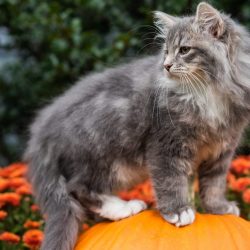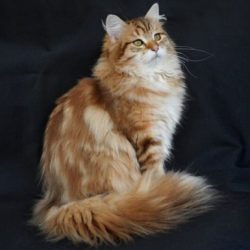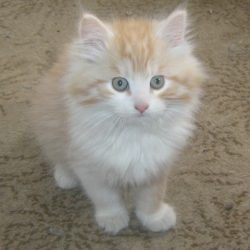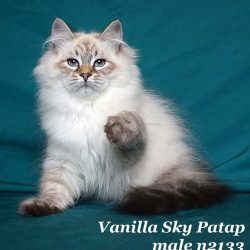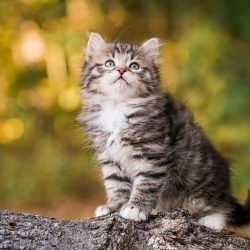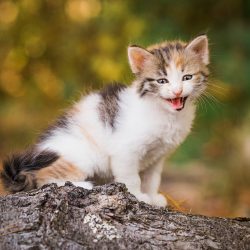Pointed or Neva Masquerade Siberians
The third major color division for Siberians are the pointed colors, which are familiar to most people as the “siamese markings.” Pointed Siberians come in all the same colors as the solids, but the color is restricted to the face, paws, and tail and the rest of the body is a creamy shade of white or tan.
Pointed Siberians have the affectionate nickname of “Neva Masquerade” (because they look like they’re going to a fancy-dress party!) and are Siberians through and through. Some breeders get a little stroppy about Nevas, implying that they are not as pure as the traditional colors, but there’s no evidence of that. Nevas have been part of the Siberian breed since its beginning, and differ from the traditional cats only in their color.
Our pedigrees have both traditional and pointed colors, and we expect both colors in our kittens.




